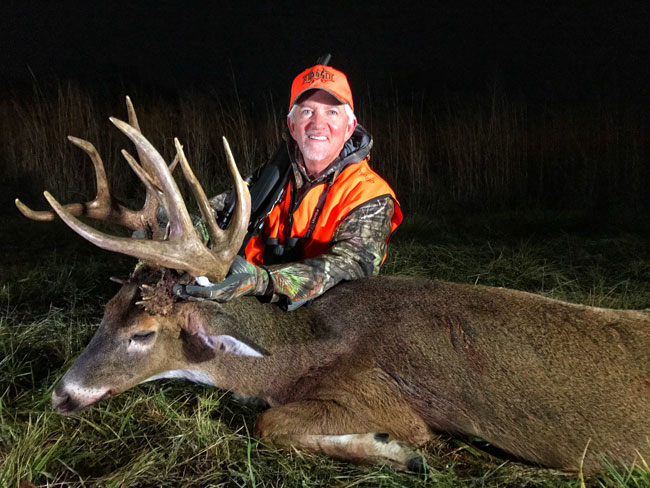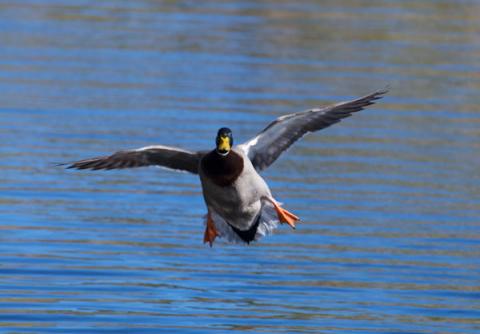Terry Drury | Drury Outdoors

Another secret for taking an older-age-class buck after the rut is to have a place to hunt that’s received little or no hunting pressure during hunting season, and that’s close to a food source.
I had leased property in Illinois, and I’d paid the farmer who farmed that property to leave 1-1/2 acres of standing soybeans. Where I had my stand set up, no one else had hunted during the entire year. The soybeans that were left were tucked back into some timber that dropped off into a hardwood hollow. There were a lot of trails and tracks coming out of that hollow and going into the soybean field. I placed a Go Muddy Bull Box Blind on the edge of that soybean field two weeks before I planned to hunt it. Once we had snow or cold weather, I felt like this spot would be a great place to take an older-age-class buck.
When I got into the blind the afternoon of December 2, 2017, the outside air temperature was about 68 degrees. But once we got into the blind, the air inside the blind was about 90 degrees. Early in the afternoon, we saw four or five does that continuously stared at our blind. Finally, later in the afternoon, I saw a buck that looked to be about 5-1/2-years old. We were able to watch that buck for a pretty good while, until he moved out in front of the blind and began to feed on the soybeans about 70 yards from us. This buck was more or less following the does, but he definitely wasn’t interested in trying to breed. His main concern was to get something to eat before the storm hit.
The weatherman had predicted that the temperature was going to drop from 68 degrees down to 27 or 28 degrees that night. Over the years, we've learned that when there’s a major temperature drop just before cold weather begins to move in, a major deer movement often occurs.
On this hunt, I was using a Winchester Super X3 automatic 20-gauge slug gun, and I was shooting Winchester’s Dual Bond 3-inch, 260-grain slug with 1850 feet velocity. I like an automatic 20-gauge slug gun like this one, because if you need a follow-up shot, you’ve got it, since there's two other shells that will come up one at a time after you fire the first shot. I had been shooting this gun before firearm season, and I could drive tacks with it at 100 yards. I actually had shot this gun out to 200 yards, and I felt confident that I could make a lethal hit at that range if I needed to do so.
The buck was about 80 to 85 yards away. When I squeezed the trigger on my 20-gauge, the buck dropped in his tracks. Later, I learned that he scored 168 inches.
Another tip to taking post-rut bucks is noticing the moon phase. We had a full moon during the early part of December. We've learned that when there's a full moon at night, the deer tend to move more than when there's little or no moon at night. I know this seems to be contrary to what most deer hunters think, but this has been what we've observed.



























